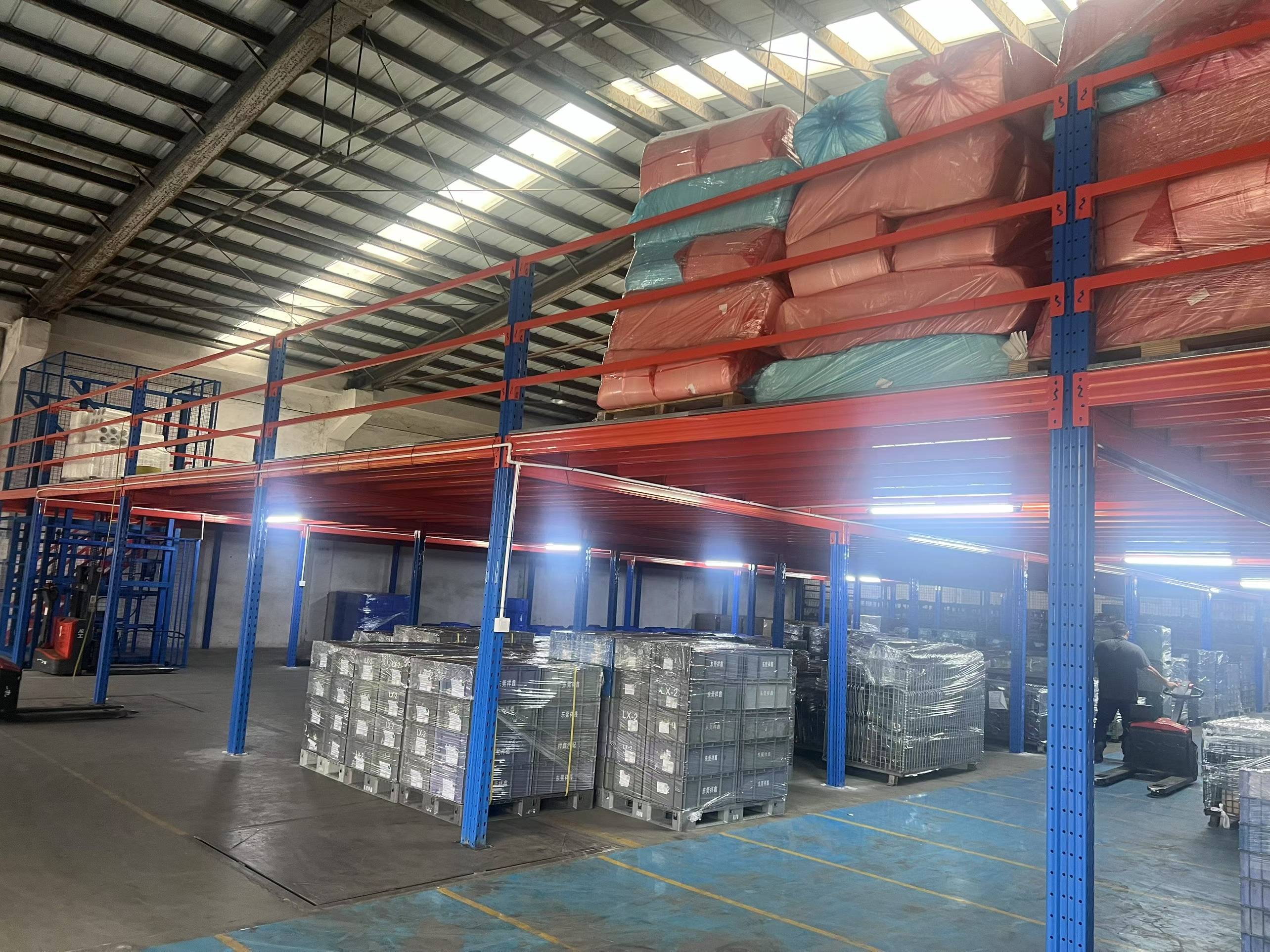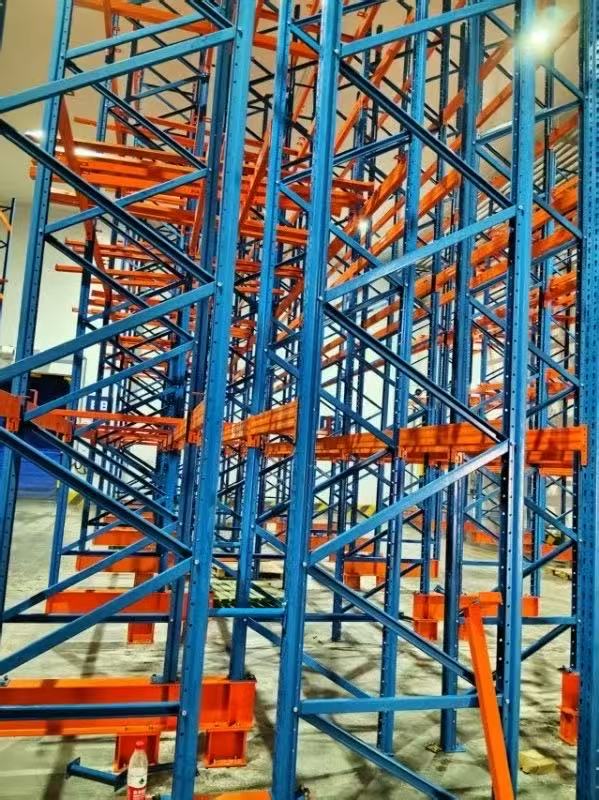When planning your warehouse storage system, the type of racking you choose is a foundational decision. Among the various options, bolt together pallet racking stands out as a versatile and popular choice for businesses of all sizes. Unlike more permanent, welded structures, this system offers a blend of strength and flexibility that is hard to beat. If you're looking for a storage solution that can grow and adapt with your business, understanding the mechanics and benefits of bolt together pallet racking is the perfect starting point. This system's design, which involves connecting upright frames and beams with bolts, provides a reliable framework for organizing and accessing your inventory efficiently.

At its core, bolt together pallet racking is an assembled storage system designed to hold unit loads on pallets. The primary components are upright frames and horizontal load beams. The upright frames are the vertical columns, often with a teardrop or keyhole pattern for beam connection. The horizontal beams slot into these frames at various heights and are securely fastened using mechanical bolts and locks.
This method of assembly is what distinguishes it from its counterpart, welded racking. The bolted connection is not a compromise on strength; instead, it creates a robust structure that can be easily reconfigured. When your storage needs change, you can simply unbolt the beams, adjust their levels, or add new sections to the existing setup. This inherent adaptability makes bolt together pallet racking a go-to solution for dynamic warehouse environments.
Why has this system remained a industry staple for so long? The advantages are both practical and financial.
Superior Flexibility and Adjustability: This is the single biggest draw. The beam levels can be adjusted in small increments to accommodate pallets of varying heights. This means you can maximize your cube storage by eliminating wasted vertical space. If you start storing a different product line, you can reconfigure the entire layout without replacing the whole system.
Ease of Installation and Relocation: Unlike welded racking that requires professional welding on-site, bolt together systems can be assembled with basic tools like wrenches and mallets. This significantly reduces initial installation costs and time. Furthermore, if you need to move to a new facility, the entire bolt together pallet racking system can be disassembled, transported, and rebuilt, protecting your investment.
Proven Strength and Durability: Don't let the simple assembly fool you. High-quality bolt together pallet racking is engineered to handle immense weights. The components are typically made from high-tensile steel and are designed to distribute load forces effectively. When properly specified and installed, these systems can support thousands of pounds per level, making them suitable for the vast majority of industrial applications.
Cost-Effectiveness: The combination of lower installation costs, reusability, and reduced need for professional contractors makes this an economically smart choice. You get a high-performance storage system without the premium price tag of custom-welded alternatives.
Improved Safety Features: A well-designed bolted racking system allows for the integration of critical safety accessories. Beam locks, column guards, and wire mesh decking can all be added to enhance the safety and security of your warehouse operations, protecting both your inventory and your staff.

The versatility of bolt together pallet racking means it finds a home in a wide range of settings. It is particularly well-suited for:
General Warehousing: For storing a diverse range of goods in bulk.
Cold Storage Facilities: The ability to withstand low temperatures and the ease of adding protective coatings make it a reliable choice for freezer and cooler applications.
Distribution Centers: Where high turnover and frequent product rotation are the norms, the easy accessibility of selective pallet racking is ideal.
Retail Backrooms: For storing overstock and organizing inventory before it hits the sales floor.
Manufacturing Plants: For storing raw materials and finished goods close to the production line.
Choosing the correct bolt together pallet racking involves more than just picking a size. You need to consider several factors to ensure optimal performance and safety.
Assess Your Load Requirements: Determine the maximum weight each pallet will carry. Remember to factor in the weight of the pallet itself. This will dictate the beam and upright capacity you need.
Measure Your Pallet Dimensions: Know the exact length, width, and height of your pallets. This will determine the required beam length and the vertical spacing between levels.
Consider Your Warehouse Layout: Measure the available floor space and ceiling height. Plan the aisle widths based on the type of forklift or pallet jack you use. Narrow aisles may require different equipment but can increase storage density.
Factor in Future Growth: Think about whether your business is expanding. It's often wise to choose a system that you can easily add onto later. Planning for future pallet racking needs during the initial design can save significant time and money.
Don't Skimp on Quality: Ensure the components are made from high-grade steel and have a suitable finish, like powder coating, to resist rust and corrosion, especially in demanding environments.
A racking system is a significant investment, and its proper maintenance is crucial for safety and longevity.
Professional Installation is Recommended: While DIY assembly is possible, having a professional team install your bolt together pallet racking ensures it is level, plumb, and torqued to the correct specifications.
Conduct Regular Inspections: Implement a schedule for visual inspections. Look for any signs of damage, such as bent beams, dented uprights, or loose bolts. Any damaged component should be replaced immediately.
Ensure Proper Load Distribution: Never exceed the stated weight capacity. Always place loads evenly on the beams and use pallets that are in good condition to prevent instability.
Use Safety Accessories: Install post protectors to guard against forklift impacts and ensure all beam connectors and safety locks are fully engaged after any adjustment.
Q1: What is the main difference between bolt together and welded pallet racking?
A1: The primary difference lies in the assembly method. Bolt together pallet racking uses mechanical bolts to connect its components, allowing for disassembly, reconfiguration, and relocation. Welded racking is permanently fused together on-site, creating a more rigid but immovable structure. The bolted type offers far greater flexibility for most warehouse applications.
Q2: How much weight can a typical bolt together pallet racking system hold?
A2: The weight capacity varies significantly based on the component specifications. Beams can range from supporting 1,000 lbs to over 25,000 lbs per pair, while upright frames have their own capacity ratings. The total system capacity is determined by its weakest component, so it's essential to have a professional calculate the requirements based on your specific load weights.
Q3: Can I modify or expand my existing bolt together pallet racking system?
A3: Yes, one of the key benefits of bolt together pallet racking is its ease of modification and expansion. You can typically add new upright frames and beams to extend the system, or you can adjust the beam heights as needed. It is crucial to ensure that any new components are compatible with your existing system and that the overall structure remains balanced and within its load specifications.
Q4: Is bolt together racking safe for seismic zones or high-traffic areas?
A4: Standard selective racking can be used in these areas, but special considerations are necessary. For seismic zones, specific engineering and bracing, along with moment frames, may be required. In high-traffic areas, robust column guards, aisle-end protectors, and reinforced footplates are highly recommended to protect the racking from forklift impacts.
Q5: What should I do if a beam or upright on my racking gets damaged?
A5: Safety should be your immediate priority. The damaged bay should be immediately unloaded and cordoned off to prevent use. Do not attempt to straighten or repair damaged components, as this can compromise their structural integrity. The only safe course of action is to replace the damaged beam or upright frame with a new, compatible part from the original manufacturer or a trusted supplier.
 Wechat
Wechat
 Whatsapp
Whatsapp